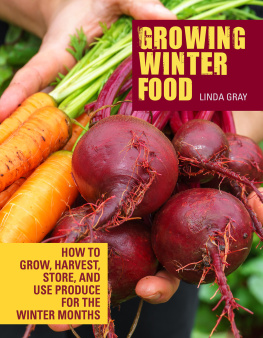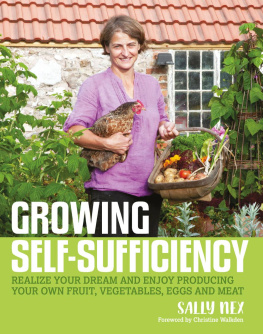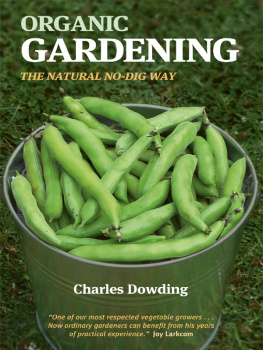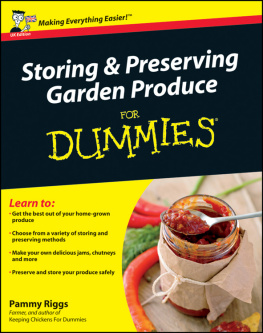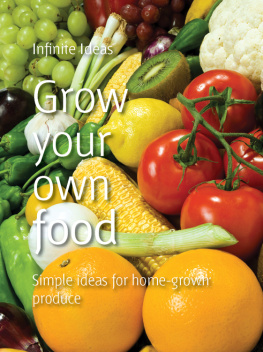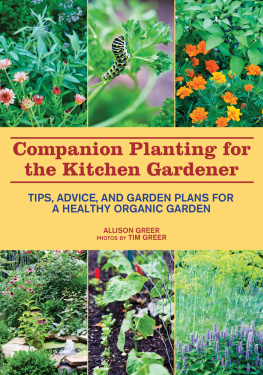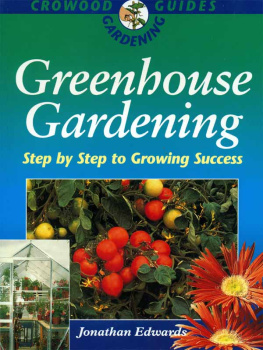Contents
The information in this book is the sum of far more than just my own experience. It is thanks to many people over the years that have shared their gardening enthusiasm, knowledge and most importantly, their questions, that I have learned so much about growing food in this climate.
I am grateful to Elizabeth Cronin who took many of the photographs in Chapter 9 and has always been generous with permission to use her images.
Further thanks are due my gardening companions: Charlotte (a fairly good guard dog), Quirk and Quark (the two recycling hens), and a multitude of (nameless) beneficial insects.
With so many gardening books published every year, why write another one?
One reason is to provide a guide to organic gardening in our coastal Pacific Northwest climate, which is like no other on the continent. For tomatoes we are limited to about the same growing schedule as other northerly regions, but go out to my garden in January and you will find it full of carrots, beets, leeks, celeriac, lettuce, spinach and other leafy greens, cabbage, Brussels sprouts, kale and much else besides. With a planting season that lasts for six months and a harvest season all year round, our plants and planting schedules (and even our pest problems) are unique.
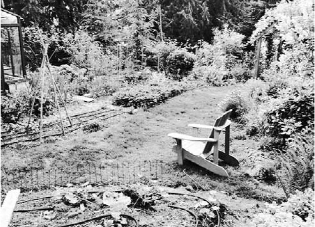
Gardening the easy way leaves me time to sit in my favorite lawn chair and enjoy the view.
Another reason is the popularity of my talks and classes on the theme Grow the most food in the smallest space (with the least work). This book expands the topic into a detailed guide to high-yield, low-maintenance food gardening. I wrote this for busy people with little time to garden and for anyone who wants to learn how to grow a lot more food in whatever space they have.
When I was a child, vegetable gardens and a fruit tree or two were common features in yards, and how to garden was common knowledge. Thats not true today. So another aim in writing this book was to provide basic information that would help new gardeners successfully transform their collection of seed packages into a delicious harvest. Growing an organic food garden is a practical skill anyone can learn: it doesnt have to involve a lot of work and certainly doesnt require a big investment in special products or equipment.
I have to confess that, for me, food gardening is really about pleasure. I want everyone to enjoy the delights of fresh food harvested straight from the garden and to reap the health benefits of a bountiful supply of organically grown fresh vegetables and fruit. Thats the biggest reason why I wrote this book!
OUR GARDENING CLIMATE
AND HOW PLANTS GROW
This chapter covers basic information to help take the guesswork out of growing vegetables and fruit in the Pacific Northwest coastal climate. It starts with an overview of the climate and weather along the coast, followed by a review of how plants grow, flower and fruit.
Gardening in the Coastal Climate
Whats different about gardening on the Pacific Northwest coast? The climate here is characterized by mild winters and warm summers. Only rarely is it too hot in the summer to grow the vegetables that do well in cool conditions (such as broccoli, lettuce and peas), yet it is almost always warm enough to allow warm-season crops to be grown reasonably well in most gardens. This is actually a wonderful place to garden because so many vegetables can be harvested fresh out of the garden all winter. Because garden beds can produce food all year, you can grow a surprising amount in a small area and you dont have to spend the time that gardeners from less fortunate climates do preserving food for the winter. (When those gardeners move to the Pacific Northwest, it can take them a while to adjust to the idea that our planting season lasts for six months and our harvesting season lasts all year.)

FIGURE 1.1. Whats for dinner in January? Carrots, kale, Komatsuna, Brussels sprouts, parsley and radicchio.
Microclimates on the Coast
Within this generally mild climate, the varied geography of the region from mountains to seashore holds many local microclimates. The complexities of West Coast geography mean that the USDA climate zone maps are not much use here. While roughly USDA Zone 8 for much of the lower elevation coast, there are large differences in local microclimates.
These microclimates differ in:
total rainfall and the timing of rainfall;
amount of local fog, marine clouds, and direct sunshine each year;
average low winter temperatures, frequency of frosts and snowfall;
the average warm temperatures in the summer.
The effect of all this is that two gardens only a short distance apart may have the same average annual temperature, but quite different gardening climates. A garden close to the ocean or the Strait of Juan de Fuca will have cool summers with more fog than a garden a short distance inland, but the winters wont be as cold. Gardeners may need a greenhouse to ripen tomatoes in an oceanside garden, but winter crops such as broccoli and salad greens will grow beautifully without one.
Rainfall patterns also vary widely around the region. Gardens in the rainforest microclimates will receive far more rain than gardens in the rain shadow of the Olympics or other coastal mountains only a few miles away. (A rain shadow is the dry zone on the opposite side of a mountain range from the prevailing direction of wind and rain; as storms pass, they dump rain on one side of the mountain, leaving little to fall on the other side.)
And then there are the variations in weather. Influenced as the coast is by the El Nio/La Nia weather patterns of the Pacific Ocean, some winters are much colder or wetter than others. A feature of winters in the south coast of British Columbia and north coastal Washington State is the occasional Arctic outbreak. These blasts of frigid air break out of higher latitudes and roar down the coast, bringing brief periods of much colder-than-average temperatures. There may only be one or two such outbreaks in a winter, and they usually only last for a few days at a time, but this weather pattern can be very damaging to unprotected vegetables in the garden.
Effects of Elevation
Elevation affects microclimates, but not always in obvious ways. The higher the elevation, the lower the minimum temperatures are in the winter. But higher elevations also get more snow. With an insulating blanket of snow providing cold protection, overwintering plants often have a better chance of surviving an Arctic outbreak at higher elevations than at sea level. With precipitation falling mostly as rain at lower elevations, the ground is often bare during cold snaps, so plants are less protected.
Higher elevation gardens (up to 1,000 feet), if they are on open slopes, can sometimes have a longer frost-free growing season than valley gardens because cold air flows down the hillsides and pools in the valleys. On very still nights, the air may be even be a few degrees warmer at higher elevations than down in the valley due to temperature inversions. This can be an advantage for higher elevation tree fruit production because there is less chance that a late frost will kill the blossoms of peaches and other early flowering fruit.
Know Your Garden
For a small investment in a minimum-maximum thermometer and a simple rain gauge (or a straight-sided tin can), you can keep weather records for your own garden. The records will become more and more useful as the years go by because they will show you the
Next page

